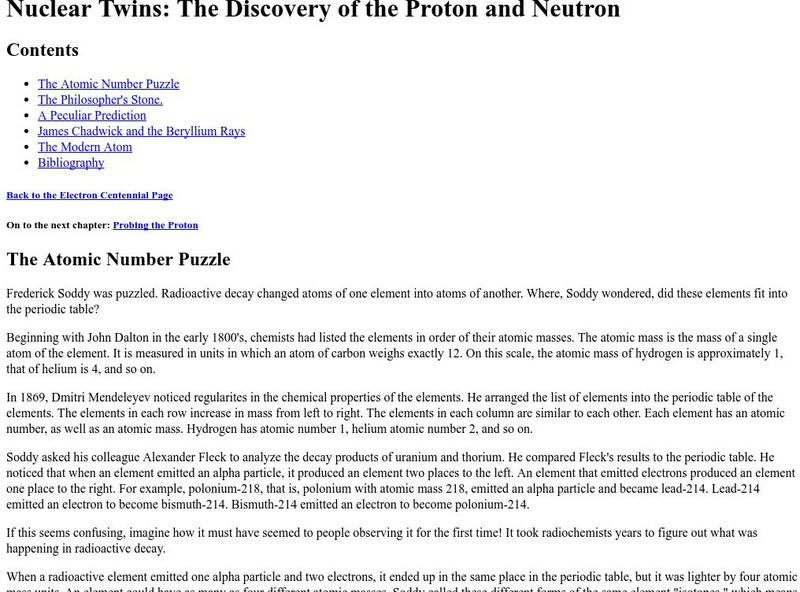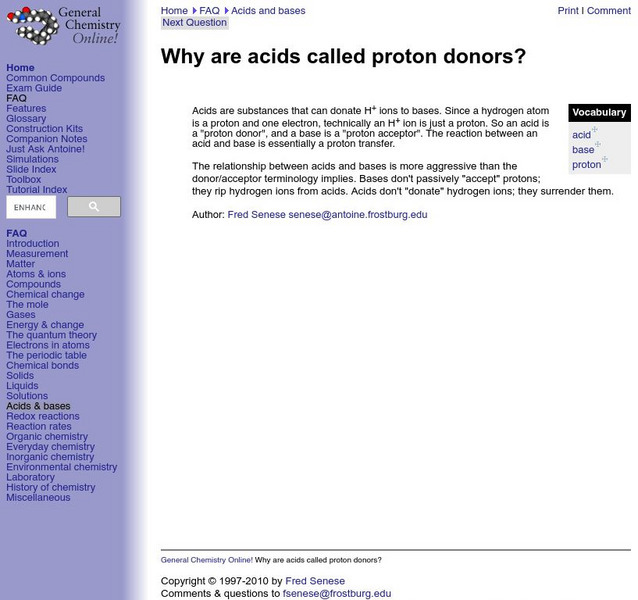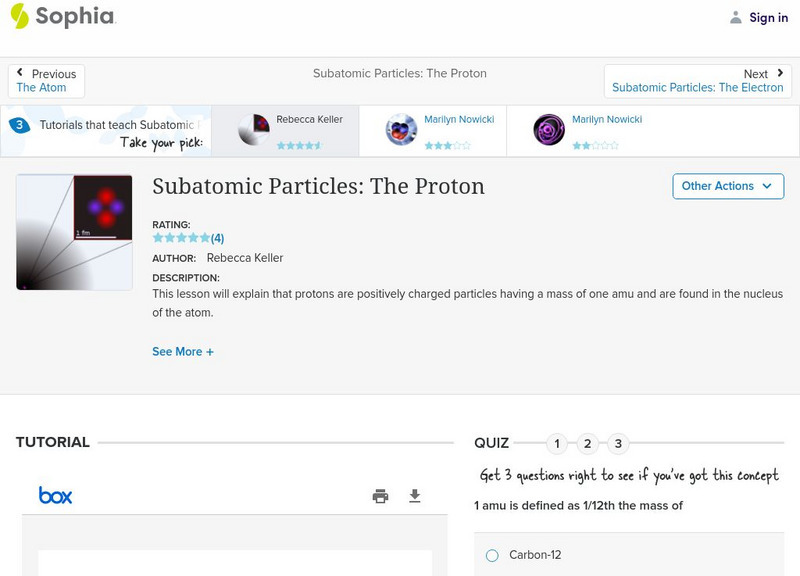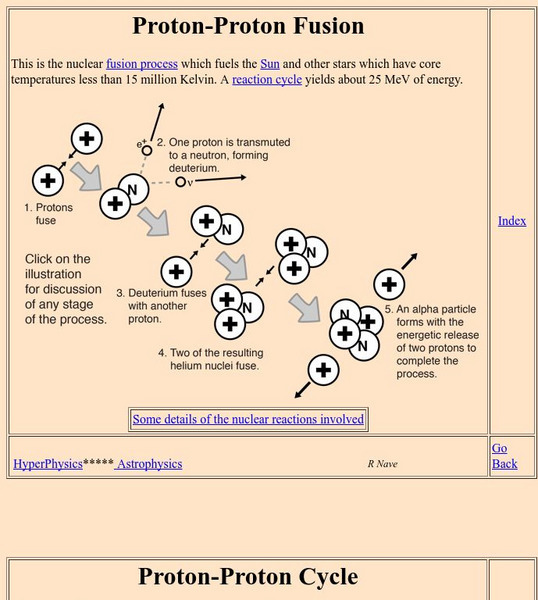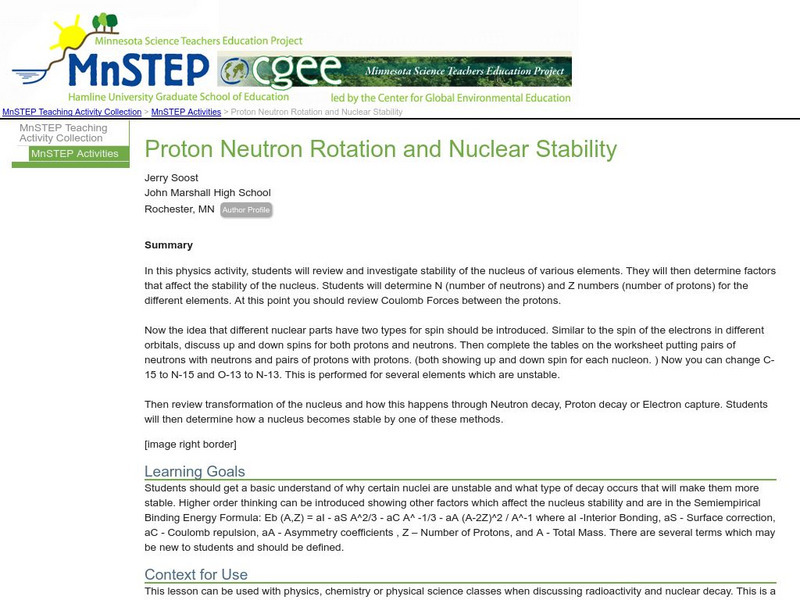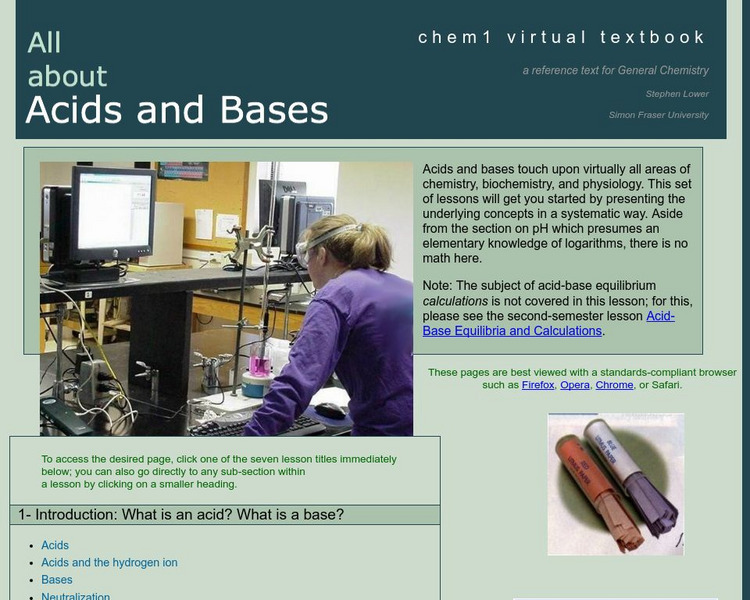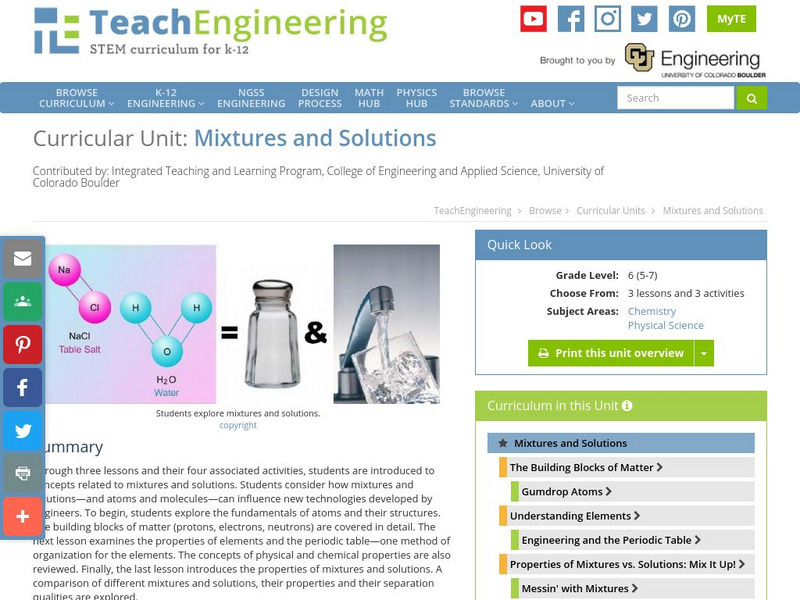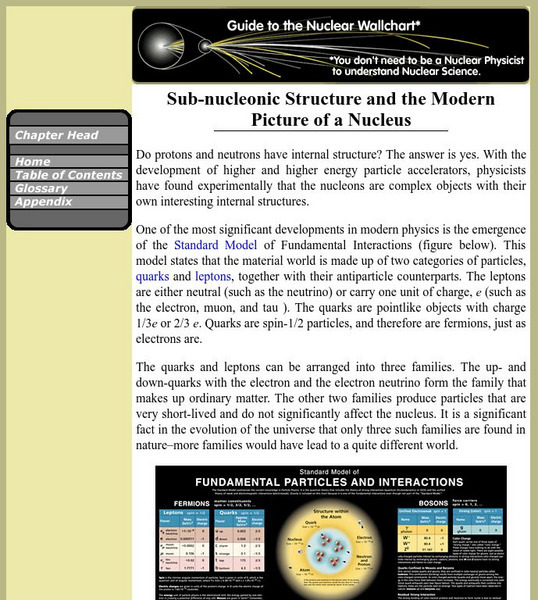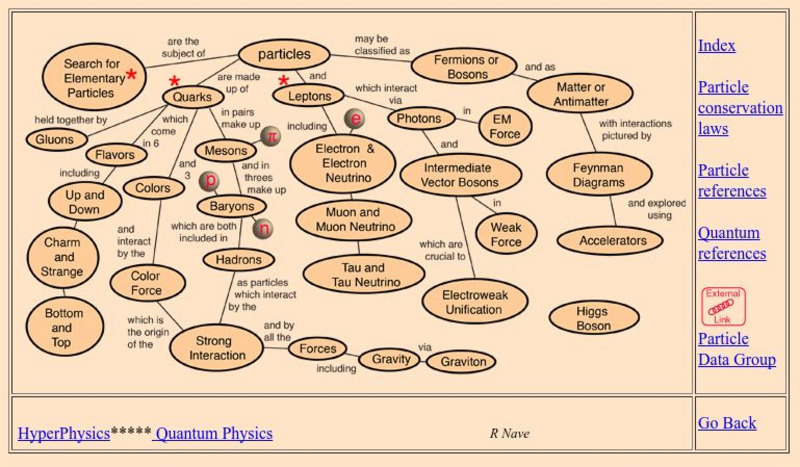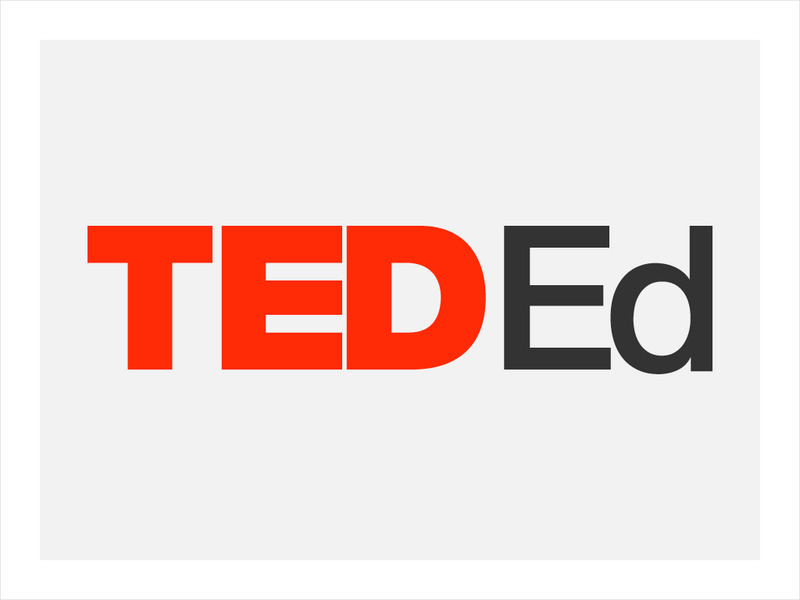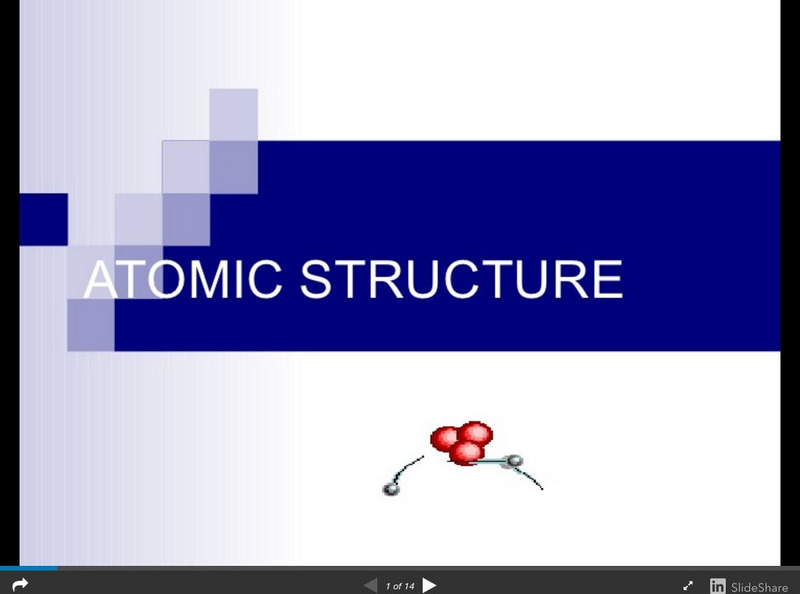Exploratorium
Exploratorium: Cern: The Proton Synchotron
From CERN, the world's largest particle accelerator, this site contains a description of the Proton Synchotron, a device used to accelerate protons for use in other machines in the accelerator complex.
California State University
Csudh Project for Chemistry: Protons, Electrons, and Neutrons
This page is an exercise in relating the number of protons, electrons, and neutrons for an atom or monoatomic ion.
Other
Nuclear Twin: The Discovery of the Proton and Neutron
Trace the history of the discovery of protons and neutrons in this informative site.
Other
American Institute of Physics: Proton Transistor Memory
Describes a new use for hydrogen ions (protons, of course). Shows that protons are not just old hat.
Frostburg State University
General Chemistry Online!: Why Are Acids Called Proton Donors?
This page provides a concise explanation of why acids are called proton donors.
Scholastic
Scholastic: Study Jams! Science: Matter: Atoms: Protons, Neutrons, Electrons
A video and a short quiz on the parts of an atom, the periodic table, and molecules.
Sophia Learning
Sophia: Subatomic Particles: The Proton: Lesson 2
This lesson will explain that protons are positively charged particles having a mass of one amu and are found in the nucleus of the atom. It is 2 of 3 in the series titled "Subatomic Particles: The Proton."
California State University
California State University: Proton, Electron, Neutron
An interesting and useful tool to practice recognition/calculation of atomic number, mass, and number of neutrons, electrons, etc. Can be used with all elements.
City University of New York
John Jay College of Criminal Justice: Atomic Structure
Resource shows the relationships bewteen terms such as atomic number, protons, and isotopes. Simple pictures of atoms help.
Georgia State University
Georgia State University: Hyper Physics: Proton Proton Fusion
A look at the reaction that fuels the Sun with this diagram of the nuclear fusion process.
Science Education Resource Center at Carleton College
Serc: Proton Neutron Rotation and Nuclear Stability
In this activity, students will review and investigate the stability of the nucleus of various elements and determine factors that affect that stability. Students will get an understanding of why certain nuclei are unstable and what type...
Simon Fraser University
Chem1 Virtual Textbook: All About Acids and Bases
Acting as an overview from the General Chemistry Virtual Textbook, this site explores acids and bases and various topics connected to them, including electron pairs, proton donors, proton acceptors, acid-base reactions, and more.
Thomas Jefferson National Accelerator Facility
Jefferson Lab: It's Elemental Element Math Game!
Learn how to read the periodic table of elements as you solve these Math questions about the number of protons, neutrons, electrons or nucleons in an atom of an element. You can choose how many questions to answer, and how complex they...
TeachEngineering
Teach Engineering: Mixtures and Solutions
This unit covers introductory concepts of mixtures and solutions. Students think about how mixtures and solutions, and atoms and molecules can influence new technologies developed by engineers. The first lesson explores the fundamentals...
Science Education Resource Center at Carleton College
Serc: Investigating Static Electricity: Creating Lightning on Much Smaller Scale
In this elementary science activity, young scholars will experiment with static electricity using balloons. After investigating how balloons attract and repel various objects, students will watch a simulation of static electricity to...
PBS
Nova: Atom Builder
Find out if you know enough about atoms to build them. The goal of the activity is to build an atom of a particular element by dragging the correct numbers of neutrons, protons and electrons into the atom.
Lawrence Berkeley National Laboratory
Berkeley Lab: Sub Nucleonic Structure and the Modern Picture of a Nucleus
A simple explanation of the structures theoretically found within protons and neutrons. The resource consists of pictures and links to additional resources.
Encyclopedia Britannica
Encyclopedia Britannica: Robert Hofstadter
Encyclopedia Britannica offers biographical information on Robert Hofstadter, Nobel Prize winner for his investigations on protons and neurons. Includes image.
Utah Education Network
Uen: Atom in a Bag
Learners will use bags of beads with known quantities of electrons, neutrons and protons to identify the element that they represent.
Georgia State University
Georgia State University: Hyper Physics: Particles
This is a very detailed site containing information on several sub-atomic particles including the Hadron.
TED Talks
Ted: Ted Ed: The Strengths and Weaknesses of Acids and Bases
In the chemical economy, acids actively give away their protons while bases actively collect them, but some more aggressively than others. George Zaidan and Charles Morton use the currency of subatomic particles to explain this unseen...
Other
University of Kansas: Quarked!: Matter Mechanic
Build elements and molecules using neutrons, protons, and electrons. Choices include helium, carbon, oxygen, aluminum, water, and salt.
Other
Particle Physics at Discovery's Horizon: The Lhc Experiments
At four points in the Large Hadron Collider, experiments will take place, which will investigate proton collisions. Find easy-to-understand explanations of the four main experiments, known as ALICE, ATLAS, CMS, and LHCb.
Tom Richey
Slide Share: Atomic Structure
Slideshow looking at the history of models of the atom, including those proposed by John Dalton, J.J. Thomson, Ernest Rutherford, Niels Bohr, and James Chadwick. Discusses subatomic particles, including the numbers of protons, neutrons,...
Other popular searches
- Protons Neutrons Electrons
- Protons, Neutrons, Electrons
- Protons, Neutron, Electrons
- Protons and Neutrons
- Protons, Electrons, Neutrons
- Electrons, Neutrons, Protons
- Electrons and Protons
- Atoms and Protons
- Protons Neutrons, Electrons
- Atoms Electrons Protons




